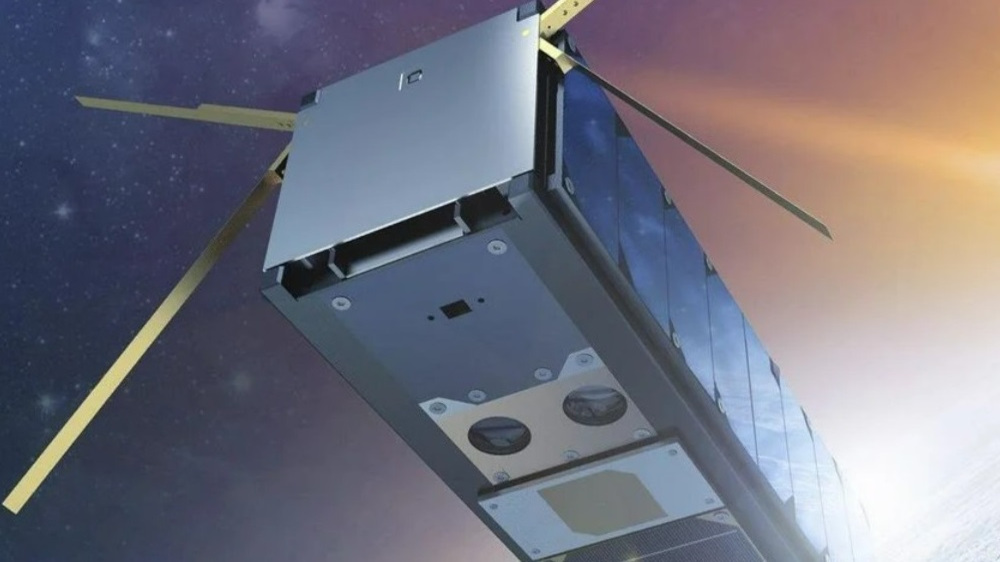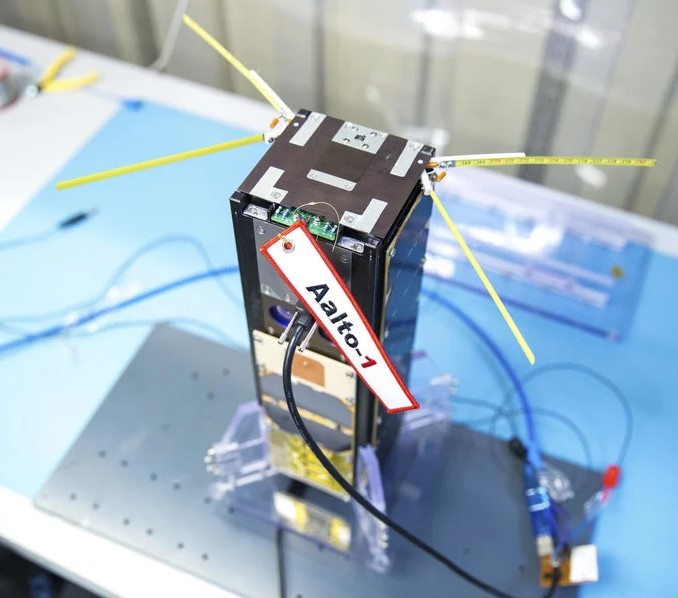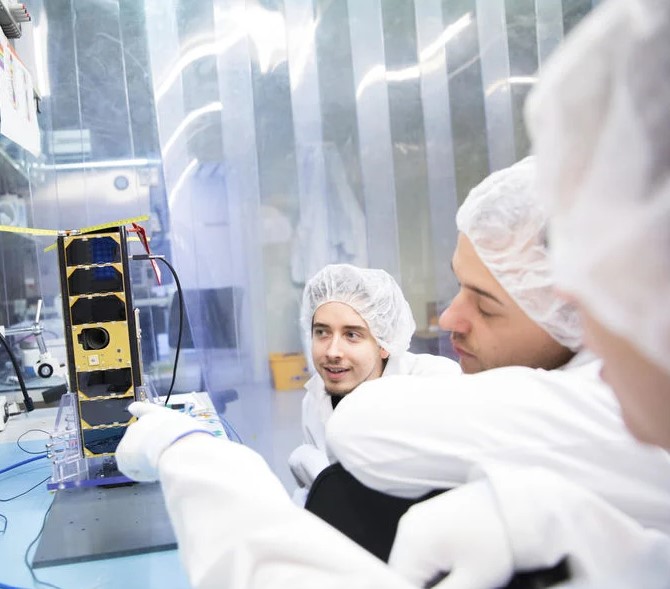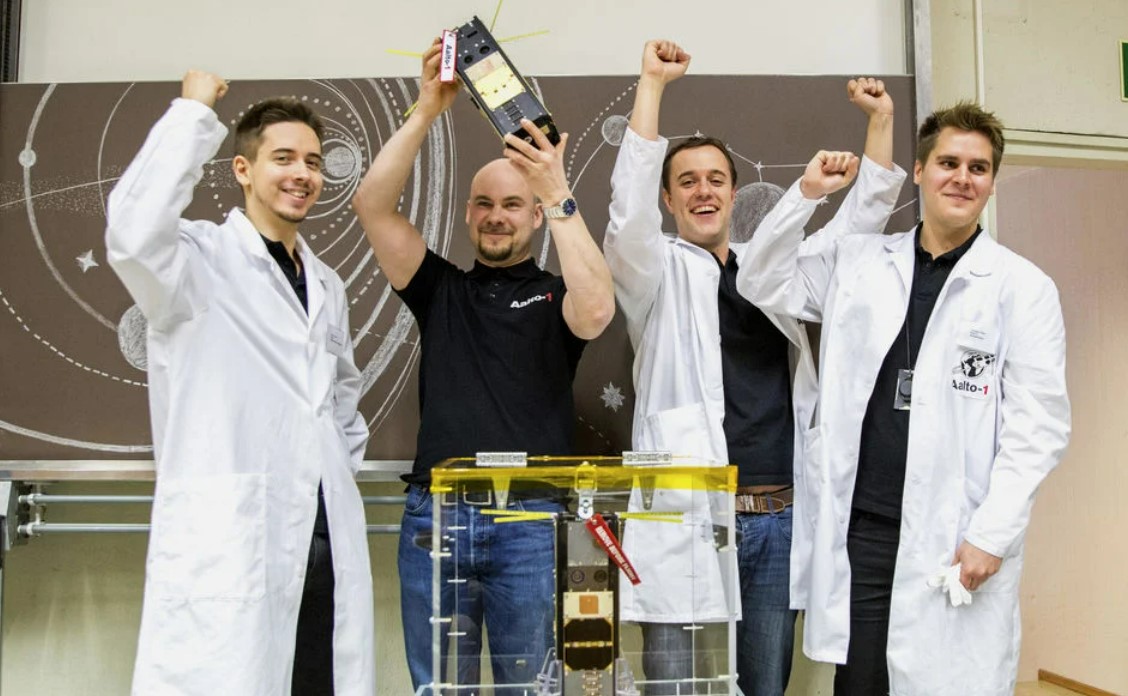The space journey of Finland's first satellite will end

The first satellite Aalto-1 in the Finnish space register, which has been orbiting the Earth for seven years, will fly across Finland for the last time today and return to the atmosphere. Aalto-1, built by students and researchers, started a new space era in Finland,” says Professor Jaan Praks, who led the project.
On Midsummer Eve 2017, Finland's first satellite, Aalto-1, built by Aalto University students, took off with a launcher to take measuring instruments completed by the Finnish Meteorological Institute, the University of Turku and VTT Technical Research Centre of Finland into orbit. The launch of the satellite began the space era of small satellites in Finland.
In the first days of September, this historic space journey will end when the satellite returns to the atmosphere, where friction heats it and burns it almost completely to ashes. If burning takes place in the dark, the vision will resemble a bright star flight, but it will be slower and longer. It is estimated that the Aalto-1 satellite will fly across Finland for the last time already today.
The moment is shark, admits Professor of Space Technology Jaan Praks from Aalto University, who led the satellite project from the very beginning. “At the same time, I am happy because Aalto-1 makes room for many new Finnish satellites and will not remain in orbit as space debris,” Praks says.
Aalto-1, which is the size of a large can of milk and weighs four kilograms, made Finnish space history in many ways. As a result, Finland received its own Space Act and Register of Space Objects, and Finland granted its first radio licence and operating licence for the satellite. Aalto-1 was also the first Finnish space object in the International Space Register.

Aalto-1 antennas are made of a familiar roller gauge. Photo: Mikko Raskinen/Aalto University
A young team formed around Aalto-1, which sparked new space enthusiasm in Finland and started the production of commercial satellites in Finland. Finland has now become the leading small satellite nation in Europe, especially as a developer and manufacturer of Earth-photographing satellites.
“Today, Finland already has dozens of satellites in space, almost all of which have been built in Otaniemi. ICEYE, Kuva Space, Arctic Astronautics, Aurora Propulsion – without this student project, there would not be many Finnish companies that brought together enthusiastic future makers around the space theme,” Praks says.
Work continues – students still interested in building satellites
Today, Finland's space sector is teeming and as many as ten satellites are built in Otaniemi each year. Most of them are commercial radar satellites produced by ICEYE. In addition, several institutes prepare instruments for international scientific missions. Their roots lead to the instruments of the Aalto-1 satellite. Aalto University also participates in the development of the software for Comet Interceptor and HERA satellite measurement systems of the European Space Agency ESA.

Photo: Mikko Raskinen / Aalto University
“Aalto University is a Member of the Centre of Excellence in Space Sciences and Technology and we are currently integrating the Foresail-1 Prime satellite. In addition, our student satellite team will meet at the beginning of the academic year to develop its satellite projects. If everything goes well next year, up to two student-driven satellites may be launched into space from the wave,” Praks says.
Aalto-1 took three scientific instruments into outer space: the imaging spectrometer developed by VTT Technical Research Centre of Finland, the radiation detector developed jointly by the Universities of Helsinki and Turku, and the plasma brake of the Finnish Meteorological Institute. The development of all instruments has continued, and newer versions of them have been included in new space missions, for example to describe asteroids.

Janne Kuhno, Jaan Praks, Antti Kestilä and Tuomas Tikka are delighted that the satellite has been completed. Photo: Mikko Raskinen / Aalto University
“Finland went to space through cooperation. Several expert bodies, research centres and companies provided assistance in the implementation of the project. The payloads, or measuring instruments, of the Aalto-1 satellite were manufactured in the best Finnish institutes and often even without separate funding. Aalto's project was mainly funded by Aalto University'S MIDE (Multidisciplinary Institute of Digitalisation and Energy), and Finnish companies and institutes participated in the procurement of the launch. I would like to thank them all very much,” Praks concludes.
VTT Technical Research Centre of Finland, the Finnish Meteorological Institute, the University of Turku and the University of Helsinki have participated in the development of the research equipment carried by the satellite. The launch of the satellite was supported by Aalto University, Nokia, Space Systems Finland (SSF), the University of Turku and RUAG Space. The project had an extensive steering group with several Finnish experts. In technical development work, students were assisted by Space Systems Finland, RSI Solutions, IBS Berlin Space Technologies, University of Eastern Finland, University of Jyväskylä, Aboa Space Research Asro, Tartu Observatory, Clyde Space, Hyperion Technologies and Turku University of Applied Sciences.
The story of the conquerors of space has just opened up in an exhibition Makers of the impossible, both in the brand-new Marsio building of our Otaniemi campus and online.
Source: Aalto University
Jaan Praks
Associate Professor
+358504205847




